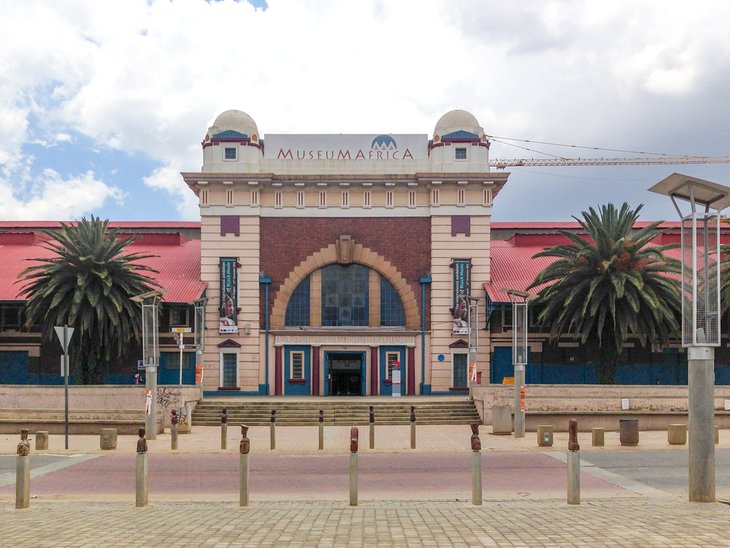The Greatest Guide To Johannesburg North Attractions
The Greatest Guide To Johannesburg North Attractions
Blog Article
How Johannesburg North Attractions can Save You Time, Stress, and Money.
Table of ContentsThe Ultimate Guide To Johannesburg North AttractionsThe Greatest Guide To Johannesburg North AttractionsNot known Details About Johannesburg North Attractions The Only Guide to Johannesburg North AttractionsSome Known Facts About Johannesburg North Attractions.The 30-Second Trick For Johannesburg North Attractions
The city grew on the side of the Witwatersrand Key Reef, a below ground stratum of gold-bearing quartz-silica corporation that arcs for hundreds of miles under the Highveld - Johannesburg North attractions. Many of the gold mines in the city stopped procedure in the 1970s, but in its day the Witwatersrand gold sector accounted for more than 40 percent of the world's yearly gold manufacturing.Johannesburg has a warm environment. The city delights in about 8 hours of sunshine per day in both wintertime and summer.
What rain the city gets drops almost solely in the summer season months, typically in stunning late-afternoon electric storms., where lots of homeowners still rely on coal for fuel.

Unknown Facts About Johannesburg North Attractions
The equilibrium of the city is inhabited by whites. Holiday accommodation varies in character and high quality.
Physical growth, although somewhat restricted by transport, proceeded swiftly as migration to South Africa, and Johannesburg in specific, increased considerably.
A lot of bad suburbs were combined, with bad blacks and whites living with each other, although the rich suburbs were generally scheduled for whites. This altered with the election of the National Party in the 1948 political elections, that began to formalise the system referred to as apartheid. Racism formally marked which residential areas each race can reside in under the Team Areas Act.
The previous system of eleven phoned number regions was reorganised in 2006. Marshalltown, as seen from the top of the Carlton Centre. The M1 and M2 run behind the structures, and the southern residential areas prolong past the highway boundary. The internal city of Johannesburg lies within the city's Area F. The number of people living in the inner city on a casual basis is unknown, as several are prohibited immigrants. The joblessness, education, and age profiles of the location are all unidentified, due to the problem of obtaining trusted information about the area.
The Buzz on Johannesburg North Attractions
Centred on the CBD, the area includes the residential areas of Yeoville, Bellevue, Troyeville, Jeppestown, and Berea to the eastern. To the west article source it spreads to Pageview (Johannesburg North attractions) and Fordsburg. There are small industrial parks to the south, such as City West-Denver and Benrose. Around 800,000 travelers pass via the internal city each day, and it functions as a local buying node for visitors from the southern suburbs. Yeoville and Bellevue have a mix of home structures and solitary domestic devices on small whole lots. The area is situated on a mountainous divide that runs from eastern to west.

Johannesburg Stadium, a training ground for both the Golden Lions and Orlando Pirates, is nearby. The eastern residential areas of Johannesburg lie in the city's 7th [] and 9th [] regions. The location is additionally functionally incorporated with East Rand boundary towns beyond the main limit of Johannesburg, such as Bedfordview and Edenvale (both part of Ekurhuleni Metropolitan Town).
Johannesburg North Attractions Fundamentals Explained
R. Tambo International Airport Terminal). The eastern residential areas are some of the earliest locations of Johannesburg, there are large areas of Jewish and other European backgrounds, the bulk of the populace is English speaking. There are three golf training courses along with a variety of safeguarded ridges with viewsites. There are numerous well-developed and up-market entertainment and buying locations in the eastern such as the Eastgate Buying Centre and the Greenstone purchasing centre.
The area is mainly composed of old "matchbox" homes, or four-room houses built by the federal government, that were developed to give cheap check my source accommodation for black employees throughout discrimination. Soweto is an abbreviation, representing "South Western Townships". Street after road in this location is lined with matchboxes; nevertheless, there are a couple of smaller locations where flourishing Sowetans have constructed houses that are a lot more comparable in stature with those in even more wealthy residential areas.
Hostels are one more prominent physical attribute of Soweto. Originally constructed to house male migrant workers, numerous have been boosted as dwellings for couples and family members. The N1 Western Bypass skirts the eastern boundary of Soweto. The suburb was not traditionally allowed to produce employment centres within the location, so practically all of its locals are commuters to various other components of the city.
All about Johannesburg North Attractions
The N1 Western Bypass attaches the north residential areas with the north-western residential areas. The houses in the north suburban areas are primarily formal, with no significant locations of casual housing, or housing that does not have an irreversible structure. Although this is a well-known location, there is a pattern of land usage change from domestic to commercial, particularly along primary arterial roads and around established nodes.
The area is well linked to road networks, particularly along the north-south axis formed by the M1 and N1. Roads to the east and west are much less well created, as there are no freeways travelling because direction. In the direction of the northern boundary of the city, the thickness of development decreases, leaving large locations of untaught land around Midrand.
Some Of Johannesburg North Attractions
, which is located on a hill forgeting the internal city and Hillbrow.
Report this page